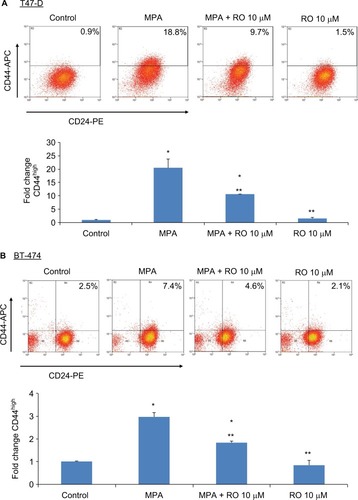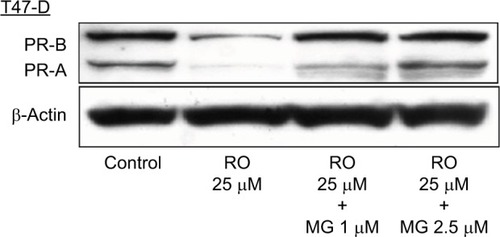Figures & data
Figure 1 RO decreases MPA-induced CD44 protein expression in hormone-dependent human breast cancer cells.
Abbreviations: ANOVA, analysis of variance; APC, allophycocyanin; DCC, dextran-coated charcoal; FBS, fetal bovine serum; MPA, medroxyprogesterone acetate; PE, phycoerythrin; RO, RO 48-8071; SEM, standard error of the mean.

Figure 2 RO decreases PR protein expression but not PR mRNA expression in T47-D cells.
Abbreviations: ANOVA, analysis of variance; DCC, dextran-coated charcoal; FBS, fetal bovine serum; GAPDH, glyceraldehyde-3-phosphate dehydrogenase; PCR, polymerase chain reaction; PR, progesterone receptor; RT-PCR, reverse transcription-PCR; RO, RO 48-8071; SEM, standard error of the mean.

Figure 3 RO reduces PR protein expression in T47-D cells in a ubiquitination-dependent manner.
Abbreviations: DCC, dextran-coated charcoal; FBS, fetal bovine serum; PR, progesterone receptor; RO, RO 48-8071.

Figure 4 RO abolishes MPA-induced mammosphere formation by T47-D cells.
Abbreviations: ANOVA, analysis of variance; DCC, dextran-coated charcoal; FBS, fetal bovine serum; MPA, medroxyprogesterone acetate; RO, RO 48-8071; SEM, standard error of the mean.

